LAB REPORT
Science and Technology Making Headlines
Feb. 15, 2019
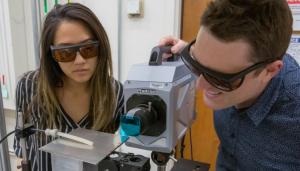
With a standard commercial projector and off-the-shelf photosensitive resins, the Computed Axial Lithography method is able to produce 3D objects, all at once, and many times faster than conventional layer-by-layer 3D printing.
Objects come to light
Though we remain a long way away from being able to turn matter into a chocolate sundae on command, a team of real-life researchers has created a 3D printer that can create entire objects simultaneously instead of creating them one painstaking layer at a time like most printing techniques. The new approach — known as Computer Axial Lithography (CAL) — carves an object out of a synthetic resin that solidifies when it comes into contact with particular patterns and intensities of light.
Using a device dubbed “the replicator,” researchers from Lawrence Livermore National Laboratory and UC Berkeley used the technique to create tiny airplanes and bridges, copies of the human jaw, a screwdriver handle and minuscule copies of Rodin’s Thinker.
The CAL process involves more than just light and gooey resin. Researchers say the printing begins with a computer model of a 3D object, which is fed into a digital video projector. The machine beams the images into a rotating cylinder that is full of the synthetic resin. As the container rotates, the pattern that’s projected changes, so over time the amount of light that each point receives can be controlled. Spots that receive a lot of light solidify, while those that do not remain liquid.

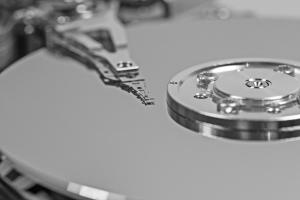
Scientists have created a new type of magnet that likely has more flexibility than conventional counterparts.
Pop goes the magnet
A team of LLNL scientists and collaborators has discovered the first robust example of a new type of magnet — one that holds promise for enhancing the performance of data storage technologies.
This "singlet-based" magnet differs from conventional magnets, in which small magnetic constituents align with one another to create a strong magnetic field. By contrast, the newly uncovered singlet-based magnet has fields that pop in and out of existence, resulting in an unstable force — but also one that potentially has more flexibility than conventional counterparts.
The idea for this type of magnet dates back to the 1960s, based on a theory that stood in sharp contrast to what had long been known about conventional magnets.
A typical magnet contains a host of tiny "magnetic moments" that are locked into alignment with other magnetic moments, all acting in unison to create a magnetic field. Exposing this assembly to heat will eliminate the magnetism; these little moments will remain — but they'll be pointing in random directions, no longer aligned.
A pioneering thought 50 years ago, by contrast, posited that a material that lacks magnetic moments might still be able to be a magnet. This sounds impossible, the scientists note, but it works because of a kind of temporary magnetic moment called a "spin exciton," which can appear when electrons collide with one another under the right conditions.

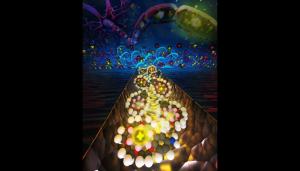
A solid-state nanopore decorated with crown ether and DNA is selective to potassium ions over sodium ions. Image by Ryan Chen/LLNL
Nanopores fire it up
Since the discovery of biological ion channels and their role in physiology, scientists have attempted to create man-made structures that mimic their biological counterparts.
New research by Lawrence Livermore scientists and collaborators at the University of California, Irvine shows that synthetic solid-state nanopores can have finely tuned transport behaviors much like the biological channels that allow a neuron to fire.
"Working with synthetic nanopores offers the benefits of increased control over the pore design and using materials that are much more robust than those seen in biology,” said Francesco Fornasiero, LLNL staff scientist. “This could enable us to eventually replace or repair biological materials with artificial versions that are superior to their biological counterparts."

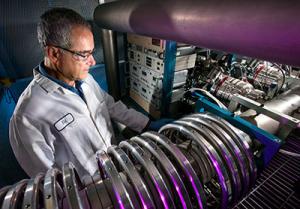
LLNL research centers at Livermore provide opportunities for collaborative research with partners in such areas as advanced manufacturing and materials science, bioengineering, forensic science, nanotechnology, mass spectrometry and signals and image processing.
A boon for life sciences
Pleasanton has long been home to major campuses for Roche Molecular and Thermo Fisher Scientific as well as Abbot Laboratories.
What's changed in the last decade in Pleasanton is life science startups have flourished. And one of the reasons is the presence and eagerness of Lawrence Livermore and Sandia national laboratories to partner with private industry.
Lawrence Livermore has opened its first new building, the Advanced Manufacturing Laboratory. It has a 5,000-square-foot "wet lab" and a 5,000-square-foot "dry lab" that includes a special enclosure to process reactive materials. It's designed to work with industrial partners who can "spin out" Lab-developed technology, while the lab can "spin in" cutting-edge industry technology.
Rich Rankin, director of the innovation and partnerships office at Lawrence Livermore, emphasized the importance of the two-way door and encouraged Lab employees to "embrace it." The goal is for win-win solutions. He readily acknowledges that Lab researchers can learn from private industry.
Lawrence's Open Campus also includes the High Performance Computing Innovation Center that is housed in two modular buildings. Since 2011, it has hosted nearly 68,000 visits, nearly 7,000 events and researchers have partnered with companies such as IBM, Intel, Cisco and GE.

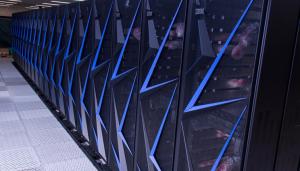
Lawrence Livermore National Laboratory’s Sierra is used for stockpile stewardship research.
Moving on up
The U.S. now claims the top two machines on a list of the 500 fastest supercomputers, as Sierra, an IBM machine for nuclear weapons research at Lawrence Livermore National Laboratory, edged out a Chinese system that last year was the very fastest.
The Top500 list ranks supercomputers based on how quickly they perform a mathematical calculation test called Linpack. The top machine, IBM's Summit at Oak Ridge National Laboratory, had claimed the No. 1 spot in June with a speed of 122.3 quintillion mathematical operations per second, or 122.3 petaflops.
But an upgrade gave it a score of 143.5 petaflops on the newest list. To match that speed, each person on the planet would have to perform 19 million calculations per second. Sierra got an upgrade, too, boosting its performance from 71.6 petaflops to 94.6 petaflops and lifting it from third place to second.
Summit and Sierra are siblings, each using IBM Power9 processors boosted by Nvidia Tesla V100 accelerator chips and connected with Mellanox high-speed Infiniband network connections. They're gargantuan machines made of row after row of refrigerator-size computing cabinets. Summit has 2.4 million processor cores and Sierra has 1.6 million.





